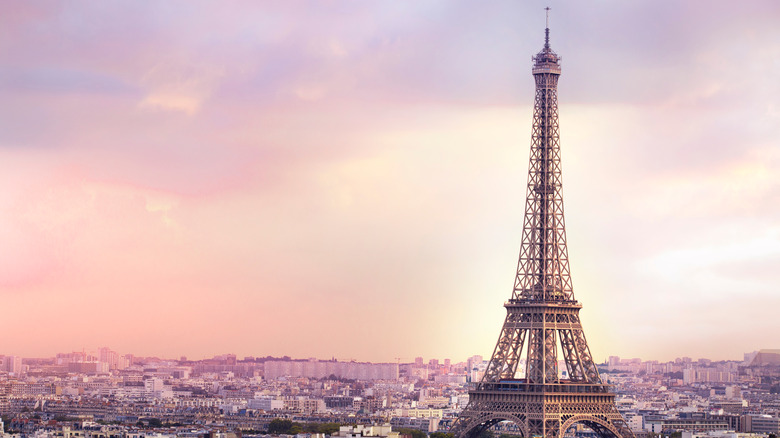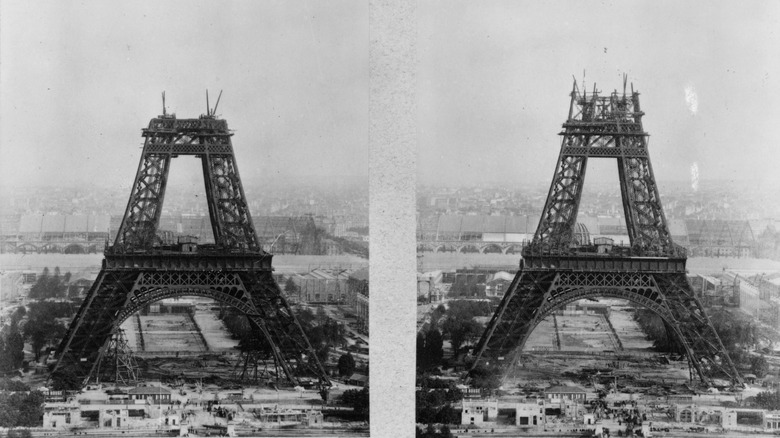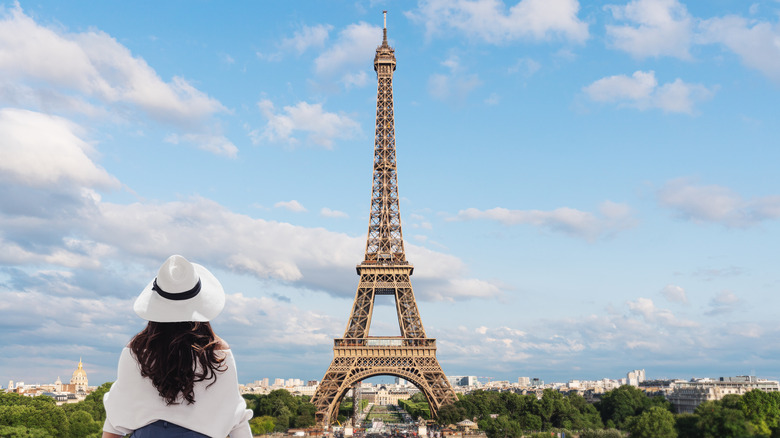How The Eiffel Tower Slightly Grows During The Summer
It is impossible to imagine Paris without the Eiffel Tower. The famous French landmark is also the most-visited tourist attraction in Europe, receiving seven million visitors every year, per Skyscanner. Yet, despite its fame, many people might not know the history behind the Eiffel Tower.
In 1886, the Parisian government made a call for designers to celebrate the 100th anniversary of the French Revolution, to be commemorated during the Universal Exposition in 1889. According to Insider, 100 firms submitted their ideas, including a water tower, a lighthouse, and a giant guillotine. Gustave Eiffel's office submitted his work anonymously and was chosen among the other competitors. Although the tower was named after him, Eiffel was not thrilled about the project, and the senior engineers Maurice Koechlin and Emile Nouguier actually designed the building (via Business Insider).
Surprisingly, not everyone was a fan of the new project. Many people believed the idea of an iron tower in the heart of Paris was absurd. A group of artists even wrote an open letter decrying the project, titled "Artists Against Mr. Eiffel's Tower."
The Eiffel Tower was supposed to be remporary
Despite all the controversies, the construction of the Eiffel Tower began on January 28, 1887. According to Business Insider, the tower is made of 18,038 pieces of wrought iron, connected by 2.5 million rivets. During two years, nearly 300 workers helped build the Eiffel Tower, and it was inaugurated on March 31, 1889. The Eiffel Tower measures 986 feet, and it held the title of the world's tallest structure until 1930 when the Chrysler Building in New York was finished, Britannica reports.
The most famous Parisian landmark was not supposed to last forever. According to Paris City Vision, the licensing rights for the tower would last for 20 years, and it should be destroyed after that. The Eiffel Tower was a success among tourists, and it received two million visitors during the Universal Exposition. Gustave Eiffel was also against destruction and tried to prove his most famous project had a scientific value. However, the decision to keep the tower came after people found out the place was an efficient radio antenna tower. During World War I, France used the place as a wireless station to intercept messages from their enemies. One of those messages helped the French military catch the famous spy Mata Hari (via History).
The Eiffel Tower has changed over the years
The Eiffel Tower has gone through some changes since its inauguration. Every seven years, painters use 60 tons of paint to renovate the Eiffel Tower, and it didn't always have the distinguished bronze colors visitors see today. In 1889, the tower was reddish-brown, and later it received a yellow and chestnut brown color (via Tour Eiffel).
During summer, the high temperatures can make the Eiffel Tower taller. According to Inshorts, its metal base expands when the temperature reaches 40°C (104°F), and the tower gains several inches. This phenomenon is called thermal expansion and happens when a material goes through extreme temperature changes. All materials are made of atoms, and the heat increases the kinetic energy, making atoms and molecules move more, needing more space. That is how the material will expand (via PhysLink).
The opposite also happens. When a material is exposed to low temperatures, the kinetic energy will decrease, and the materials will contract (via PhysLink). Therefore the Eiffel Tower loses a few inches during the winter (via Tour Eiffel). Visitors and observers can't notice those size changes, and it doesn't affect the Eiffel Tower's safety.


